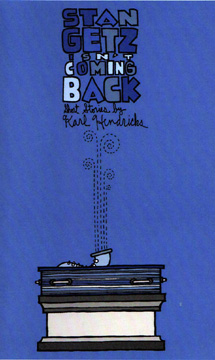|
|
||||||
|
|
We were heading back to Pittsburgh after
playing a show in Harrisburg, rain coming down all around us as we rode the
equipment-laden van back West on the Pennsylvania turnpike. Night was falling, and I was pounding
roadside coffee when my old friend JD—who had come along to film our show—asked
our drummer, KG, “Well, what do you think makes a great record then?”
It was such a simple question, so direct, and,
the way JD phrased it, you could tell there was a precedent for the question—it
was obvious this was part of a larger conversation. KG hemmed and hawed a bit, but then finally spat out something
like, “A great album is something that’s familiar to me, something that reminds
me of the things I like, but that also is its own thing—it’s unique in a way.”
KG’s answer was also simple and direct, yet it
was unquestionably vague. JD seemed
satisfied with it though, and the conversation seemed to end there. I popped a mix-tape into the tape deck and
kept my eyes on the horizon and the dashboard. Their conversation got me thinking. About music, sure, but also about taste, about temperament, and about Karl
Hendricks and his short story chapbook.
Already by the start of “Pam’s First Date,”
I’m struck by the ambitious choice of the narrator; writing in the voice of a
teenage girl seems to me like something that would come with age and much
practice. Hendricks pulls it off,
though, and it sets up the concise title story—the centerpiece of the
chapbook—quite nicely.
The brevity of “Stan
Getz Isn’t Coming Back,” in turn sets up the long closing story (“The Card
Party”). It’s a nice move, closing with
the long story—it reminds me of reading a book of poems by John Ashbery. It’s also smart because “The Card Party” is
the most ambitious story in the collection. Unlike the other stories, it alternates between two complicated
narrators—a balancing act of sorts—and both characters are compelling enough to
keep the reader’s attention.
One of the things about Hendricks’s chapbook
that makes me think of my friend KG’s idea about great records is the style of
Hendricks’s writing. Hendricks is
upfront about the influence of Raymond Carver on his writing, and it’s true
that there is an evident connection to Carver (and Hemingway before him) in Stan Getz Isn’t Coming Back. The stories are written in a very clear and
direct style with only occasional moments of opulence or decoration. And while dialogue isn’t overused, it’s
apparent Hendricks has a knack for writing it successfully.
I’ve come to admire this
stripped-down tradition in fiction, and so, already at my first encounter with
Hendricks’s fiction—hearing him reading “Stan Getz Isn’t Coming Back”—I was
taken with his work. I recognized it as
something that reminded me of the things I like. Something I find that separates Hendricks from his predecessors,
however, is his sense of humor. While
the stories in his chapbook consistently deal with regret, loss, and isolation,
there is occasionally a comic moment that gives a reprieve from the intensity
of the subject matter. Sometimes this
comic moment is humorous at the expense of our narrator, though usually, the
narrator is in on the joke.
One thing that
offsets the generally stripped-down style of Hendricks’s writing is what an old
writing teacher of mine would call “moments of transcendence.” Placed among the keen descriptions and
telling dialogue of these stories, Hendricks composes stunning images and
asides that are the hallmark of his talent as a writer. These are sometimes executed simply by a
surprisingly strange scene—like the basement party in “Pam’s First Date,” with
its bowls of soup and girl dancing to a live punk band in her underwear. However, more commonly, these moments take
place in the inner monologue of a story’s narrator—like the “woeful canyon”
image at the end of the title story.
Reading through Stan Getz Isn’t Coming Back, it’s hard
not to notice the endings of the stories. Not only because Hendricks likes to end with moments of transcendence,
but also because in these stories of depressed, frustrated, and oftentimes
overly nostalgic individuals, there is usually a sense of hope for them by the
end. The stories open with a character
in a certain state of flux, but they don’t end with the character’s certain
success or failure. They tend to close
with a character hopeful for something positive. Or at least hopeful for change.
Which illuminates
one of the great things about Karl Hendricks’s chapbook—his wonderful use of
the short story form. Seeing these
stories of his together like this, it’s clear why the short story is his form
of choice. Hendricks is very adept at
capturing moments of transition in the lives of his characters. We don’t just see any snapshot of the life
or lives of these people he has created—we see a very important one. Maybe it doesn’t give us any indication of
what will become of them. But perhaps
it gives us a bit of perspective on our own lives and the moments that change
us, for better or for worse.

|
|
||||

